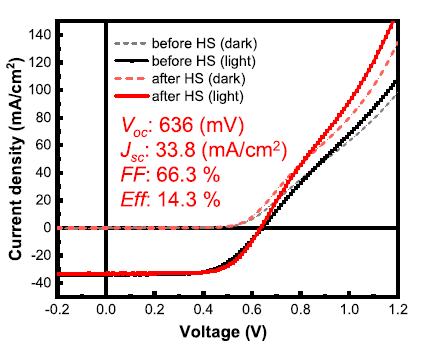Heat Soaking for Improving Rollover From S at the Back of CIGSSe Solar Cells
J. H. Siew, Y. -H. Chen, Y. -L. Chang, C. -H. Lai and T. -Y. Lin,
IEEE Journal of Photovoltaics, vol. 13, no. 4, pp. 503-509, July 2023,
doi: 10.1109/JPHOTOV.2023.3271891.
Researchers investigated a low-temperature heat-soaking (HS) treatment to mitigate the rollover effect in copper indium gallium sulfur selenide (CIGSSe) solar cells. Excessive sulfur accumulation on the absorber's backside forms a Schottky barrier, causing current-voltage rollover. HS treatment reduced saturation and improved cell efficiency by over 6%. Elemental redistribution after HS reduced sulfur accumulation, enabling Fowler-Nordheim tunneling through a shortened Schottky barrier width. This study offers a simple, practical strategy to address the second reverse diode effect caused by sulfurization in CIGSSe solar cells.
How Paios was used
Temperature-dependent dark current density and voltage were measured using a Paios system with Fluxim Characterization Suite software attached to a temperature-controlled probe stage.

